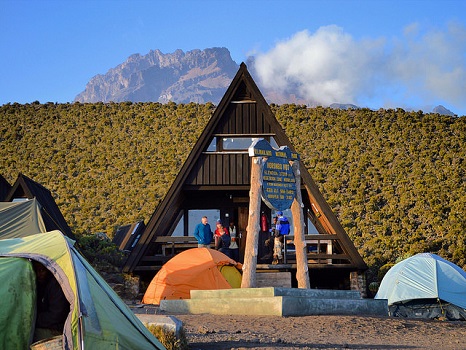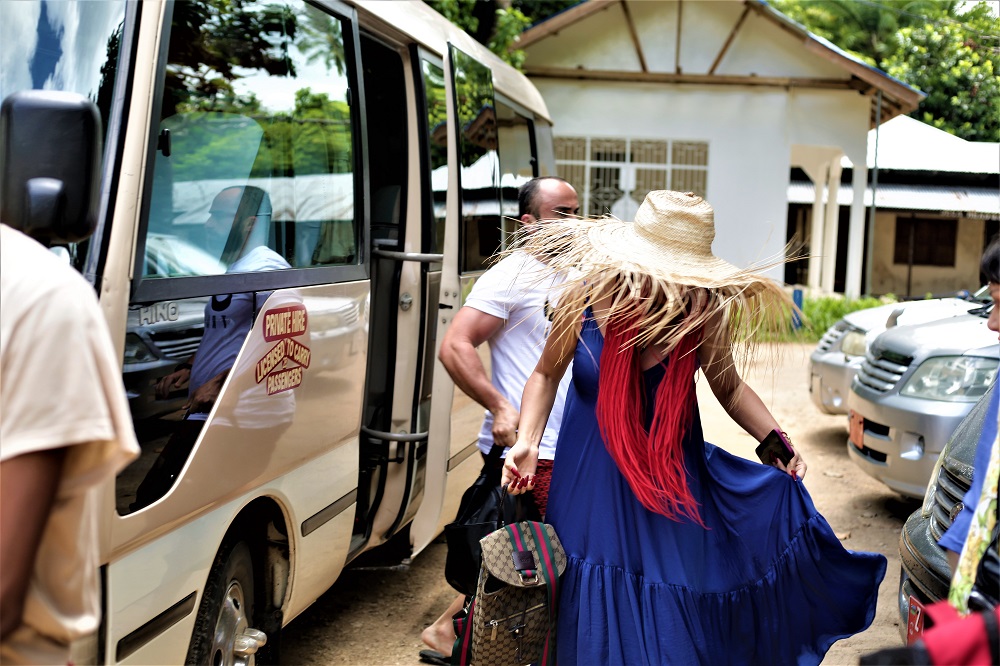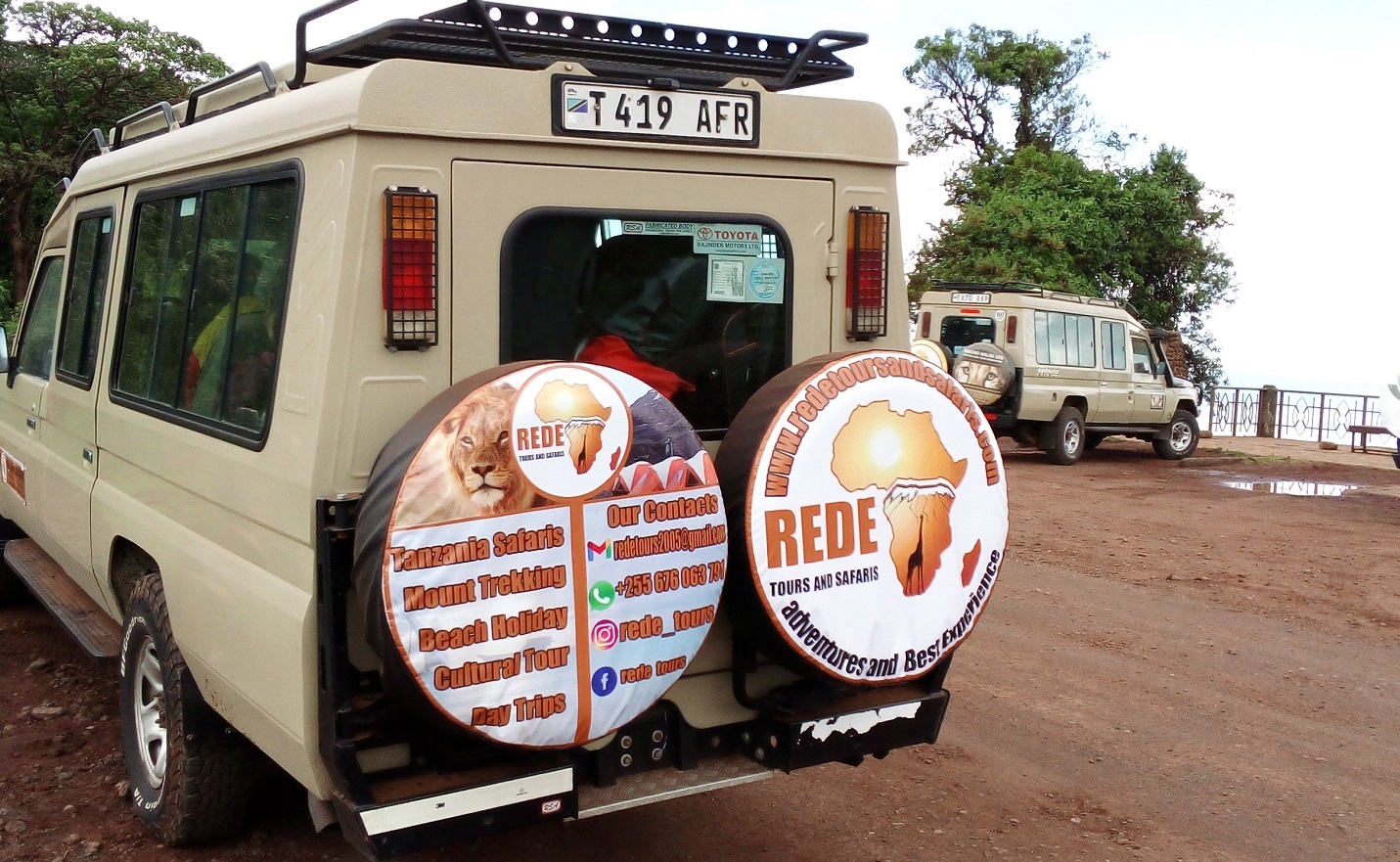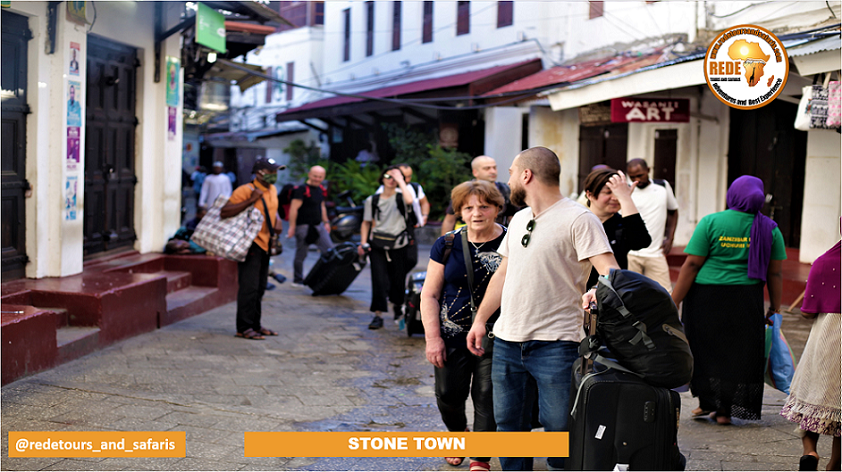Great Serengeti migration safari
The Great Serengeti Migration safari is one of the most spectacular wildlife events in the world. great Serengeti migration safari takes place in the Serengeti National Park, a vast ecosystem in Tanzania and Kenya, and involves the movement of millions of animals in search of food and water. The Serengeti migration primarily consists of wildebeest, zebras, and gazelles, but other animals like lions, cheetahs, and crocodiles are also part of this incredible journey. The great migration is a continuous cycle that covers almost 1,200 miles each year, following the rainfall patterns and the growth of fresh grass, which is the primary food source for these animals.
The great Serengeti migration starts in the southern Serengeti, where the wildebeest calving season occurs between January and March. Thousands of wildebeest calves are born during this time, providing an abundant food source for predators. As the dry season approaches in May, the animals start moving north in search of water and greener pastures. By June, the herds gather in the western corridor of the Serengeti, preparing for a treacherous river crossing, most notably across the Grumeti River. This event is filled with danger, as crocodiles lie in wait for the vulnerable animals attempting to cross the river. Many do not survive this crossing.
The great Serengeti migration continues northwards into the Masai Mara Reserve in Kenya by July. Here, the herds face another challenging river crossing, this time across the Mara River. The journey doesn't end here; the animals start moving back south in November, heading back to the Serengeti plains in anticipation of the upcoming calving season. The Great Serengeti Migration is a testament to the resilience and adaptability of these animals. It's not only a spectacular sight for tourists and wildlife enthusiasts but also a critical natural phenomenon that sustains the delicate balance of life in the Serengeti ecosystem.
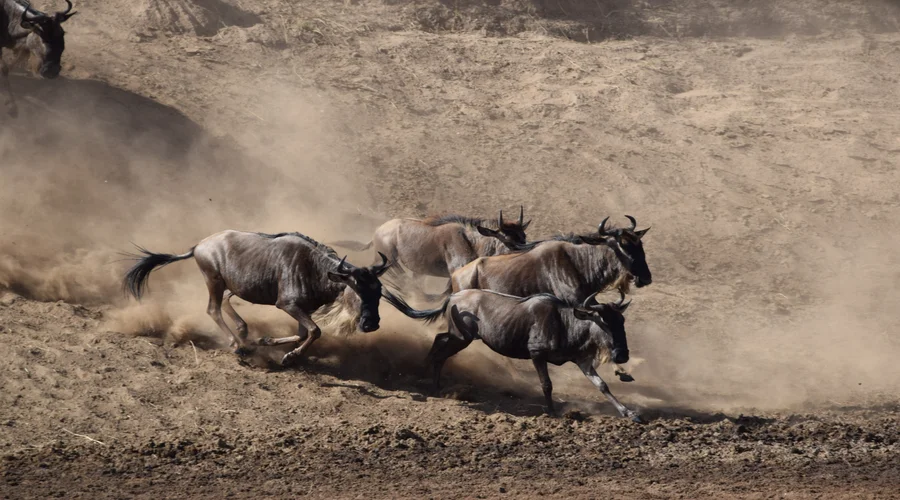
How wildebeest move
The great wildebeest move in massive herds, often numbering in the hundreds of thousands. They travel in a clockwise direction around the Serengeti-Mara ecosystem, following the rains and finding fresh grass. The wildebeest are driven by a strong instinct to migrate. They are able to sense the direction of the rains and the quality of the grass from many miles away. They also have a very good memory of the migration route, and they can follow it even when the terrain is unfamiliar. The wildebeest move at a steady pace of about 3-4 miles per hour. They can travel up to 10 miles in a day, but they usually rest during the hottest part of the day. The wildebeest migration is a dangerous journey. The animals have to cross crocodile-infested rivers and face predators such as lions, cheetahs, and hyenas. However, the wildebeest have adapted to these challenges. They cross rivers in large groups to reduce the risk of being attacked by crocodiles. They also use their horns to defend themselves from predators.
When on the move, wildebeest often form long, single-file lines, creating a continuous flow of animals across the landscape. During migration, wildebeest herds are led by dominant individuals who set the pace and direction of the movement. These leaders are often experienced older individuals who have knowledge of the migration routes and the location of water and food sources. The rest of the herd follows these leaders, maintaining a close distance to benefit from the safety of numbers and reduce the risk of predation.
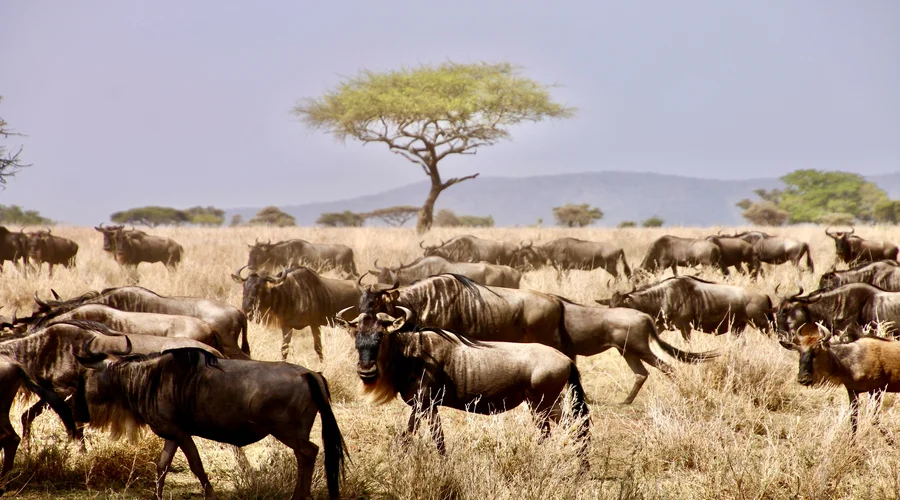
Key Reasons for Great Serengeti migration Safari
Wildebeest migrate to follow the rains and find fresh grass. The Serengeti National Park in Tanzania and the Masai Mara National Reserve in Kenya experience a seasonal rainfall pattern, with the rains moving from south to north throughout the year. The wildebeest follow the rains to find the greenest grass and water sources. During the dry season, water and vegetation become scarce in their current location. By moving to areas where rain has fallen more recently, they can access new grass, their primary source of food.
The great Serengeti migration safari is the survival strategy honed over generations. Wildebeest are herbivores, and their diet consists mainly of grass. They have adapted to this nomadic lifestyle, constantly moving to areas where grass is young, green, and nutrient-rich. This movement also helps them avoid overgrazing an area, allowing the land and vegetation to recover. Additionally, the migration plays a crucial role in breaking down plant material, distributing seeds, and supporting various other species in the ecosystem.
Apart from the availability of food,great wildebeest migration are also influenced by their reproductive cycle. The calving season usually occurs in the southern Serengeti, where the nutrient-rich grass provides essential nutrients for pregnant females and nursing mothers. After giving birth, the herds gradually move northward, following the rain and fresh grass, providing a continuous cycle of sustenance for these remarkable animals. The migration is a testament to the remarkable adaptability of wildlife to the challenges posed by their environment, ensuring their survival in the wild.
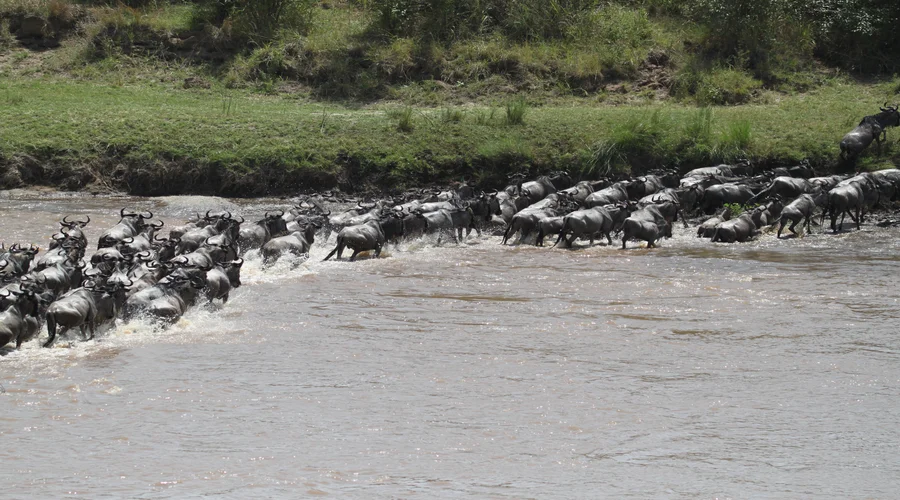
The Best time to visit Serengeti For the Great Migration safari
The best time to visit the Serengeti for the Great Migration safari depends on which stage of the migration you want to see, as the animals migrate all year. However, if you want to catch the most dramatic and thrilling moments of the migration, consider the following key periods:
January to March also known as Calving Season
This Calving season of the great serengeti migration safari, covers from January to March, is a time of both natural wonder and vulnerability. During these months, the Serengeti's southern plains become a nursery for wildebeest, with tens of thousands of pregnant females giving birth to their calves. The vast grasslands become a sea of young wildebeest, nicknamed "clowns of the savannah" because of their playful and interested nature. The birthing period is aligned, ensuring that the newborns are safe in numbers. This natural phenomenon not only demonstrates the circle of life, but it also creates an abundance of food for predators like lions, cheetahs, and hyenas. Predators take advantage of the abundance of vulnerable young calves, making calving season exciting for wildlife enthusiasts and photographers looking to capture the raw essence of the Serengeti's ecosystem.
The cries of newborn wildebeest fill the air with a sense of renewal and vitality during calving season on the Serengeti plains. Shortly after birth, the young calves learn to stand and walk, demonstrating incredible strength. The mothers of wildebeest fiercely guard their offspring, guiding them through their first steps and ensuring they gain strength quickly. This period is critical for the wildebeest population's survival because the young must grow quickly and gain enough strength to keep up with their migration when it resumes. Calving season not only demonstrates these animals' incredible adaptability, but it also provides a significant glimpse into nature's delicate balance, where life and death intersect in the Serengeti great wildebeest migration cycle.
June to August Also known as river-crossing season
The Serengeti River Crossing Season, which runs from June to September, is without a doubt one of the most dramatic and awe-inspiring natural spectacles. As the dry season progresses, vast herds of wildebeest, zebras, and gazelles gather on the banks of rivers, particularly the Grumeti and Mara rivers, in preparation for their dangerous journey to greener pastures. Wildebeest undertake perilous river crossings, fueled by the instinct to seek new grazing lands and water sources. They face dangerous obstacles such as fast-flowing waters and hiding crocodiles. The air crackles with tension as the herds gather, their thunderous horns echoing across the plains, before diving into the rivers. It's a scene of both chaos and order, as the animals navigate the currents, helping and hindering each other in their quest for survival. Witnessing this incredible display of determination, cooperation, and tenacity leaves an indelible mark on spectators, showcasing the resilience of these animals in the face of nature's challenges.
For the predators, especially the lions and crocodiles, this period is a time of abundance. Concealed among the reeds, crocodiles patiently wait for the opportune moment to strike, preying on the wildebeest as they cross. Lions, too, capitalize on the confusion and weakness of the migrating herds, targeting the young, the old, and the injured. This intricate dance between predator and prey underscores the delicate balance of the Serengeti ecosystem, where each participant plays a vital role. The river crossing season, with its heart-stopping moments and the inherent struggle for survival, exemplifies the raw essence of nature and serves as a testament to the sheer tenacity of life in the wild.
October to November also called The Return Journey
The return journey season in the Serengeti, spanning from October to November, marks the final chapter of the epic Great Serengeti migration. After months of traversing the savannahs, crossing perilous rivers, and giving birth to a new generation, the vast herds of wildebeest, zebras, and gazelles start their southward migration back to the Serengeti plains. This period is characterized by a sense of urgency and determination as the animals cover hundreds of miles to return to the nutrient-rich grasslands of the southern Serengeti. The landscape, once teeming with life during the calving season, now showcases the resilience of the survivors. The returning herds face new challenges, including dwindling resources and the constant threat of predators. Yet, their journey embodies the cyclical nature of life in the wild, emphasizing the instinctual drive to adapt and endure against all odds.
During the return journey, the Serengeti echoes with the sounds of hooves pounding the earth and the haunting calls of predators. Lions, cheetahs, and hyenas trail the herds, capitalizing on the weakened and vulnerable individuals. The predators play a crucial role in shaping the dynamics of the migration, ensuring that only the fittest and strongest survive to complete the journey. This phase of the great Serengeti migration safari serves as a reminder of the challenges faced by wildlife in their quest for survival and highlights the intricate web of life where every species, from the grazers to the predators, plays a vital part in maintaining the ecological equilibrium of the Serengeti ecosystem.
The best time to visit the Serengeti National Park for the great Serengeti migration is during the dry season, from June to October. During this time, the weather is sunny and warm, with little rain. The vegetation is also less thick, making it easier to spot wildlife. The Great serengeti Migration safari is the most popular attraction in the Serengeti, and it is best seen during the dry season. However, the Serengeti is also a great place to see other wildlife, such as lions, elephants, giraffes, and zebras. These animals can be seen year-round, but they are easier to spot during the dry season when they are concentrated around water sources. When planning a trip to the Serengeti for the great Serengeti migration watching or wildlife and plains view, it is important to book your flights and safari accommodation well in advance, especially if you are traveling during the peak season (July and August).
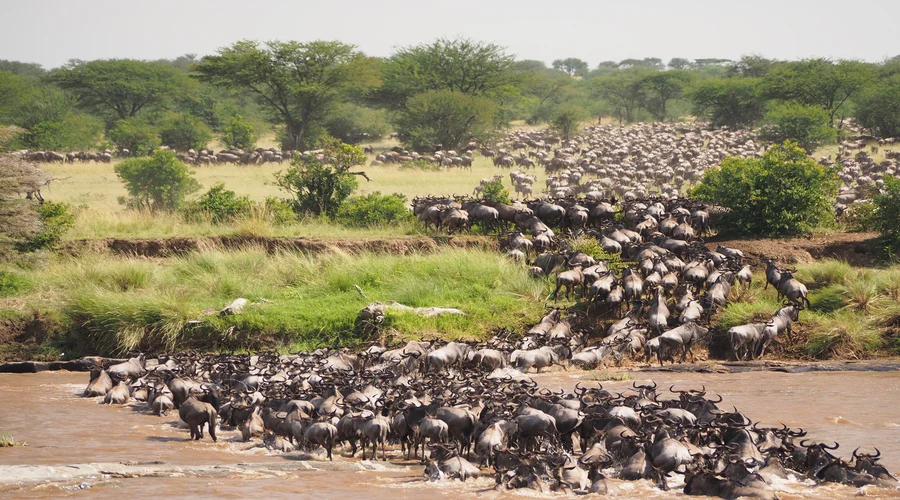
The best Great Serengeti migration Safari Tours in Tanzania
Choosing the best great Serengeti migration safari package depends on your interests, budget, and preferred level of luxury. However, here are some popular and highly-rated Tanzania Serengeti migration safari packages to consider:
1. 4 days Serengeti migration safari : This offers an immersive experience packed with thrilling wildlife encounters and breathtaking landscapes. In these four days, travelers go on a journey through the heart of the Serengeti, witnessing the mesmerizing spectacle of thousands of wildebeest, zebras, and gazelles on their annual migration. Guided by knowledgeable experts, visitors can explore key migration points, including river crossings and lush grazing areas. Despite its concise duration, this safari allows for an in-depth exploration of the migration's pivotal moments, providing ample opportunities for both adventure and relaxation. With carefully planned itineraries, travelers can capture the essence of this natural wonder while enjoying the comfort of well-appointed lodges or tented camps.
6 Days Serengeti Migration Safari : Extending the safari to 6 days enriches the Serengeti wildebeest migration experience, offering a more comprehensive and leisurely exploration of this awe-inspiring phenomenon. Over the course of six days, adventurers have the chance to delve deeper into the intricacies of the migration. They can observe the herds at various stages, from the anticipation of river crossings to the calmer moments of grazing on the Serengeti's fertile plains. This extended timeframe allows for a more relaxed pace, enabling travelers to immerse themselves in the diverse wildlife, from the majestic big cats to the myriad bird species that inhabit the region. With additional days, safari-goers can venture off the beaten path, discovering hidden gems within the Serengeti, all while enjoying the comforts of well-equipped safari accommodations.
7 days Serengeti migration safari : This Iconic Wildebeest migation Tanzania Safari represents the pinnacle of wildlife enthusiasts' dreams. This extended Serengeti migration safari expedition provides an unparalleled opportunity to witness the migration's nuances and complexities. Across a week, travelers can follow the herds as they traverse vast plains, capturing the intimate moments of their journey. From the intensity of river crossings, where survival instincts are on full display, to the quieter times of rest and rejuvenation, every facet of the migration unfolds before the eyes of the observer. Additionally, with a week-long Serengeti migration itinerary, there's ample time for side excursions, enabling adventurers to explore adjacent areas and witness other remarkable wildlife, such as elephants, giraffes, and an array of antelope species. This Serengeti migration safari not only guarantees a front-row seat to the world's greatest wildlife spectacle but also provides a profound understanding of the Serengeti's ecological intricacies, leaving travelers with memories to last a lifetime.
These are the popular packages for Great Serengeti migration safari, however the Itinerary can be tailor-made to fit your Schedule, budget and even you interest and desire to explore this natural phenomen thats is not limited by danger, weather or any natural occurence. Kindly book with us for a unique and picturesque experience of a lifetime.
How to book for Best great Serengeti migration safari adventures..?
Book for best great Serengeti migration safari adventures by sending us the email via redetours2005@gmail.com Or Use the Booking form below.
Our Best Tanzania Safari Tours For 2023 & 2024
